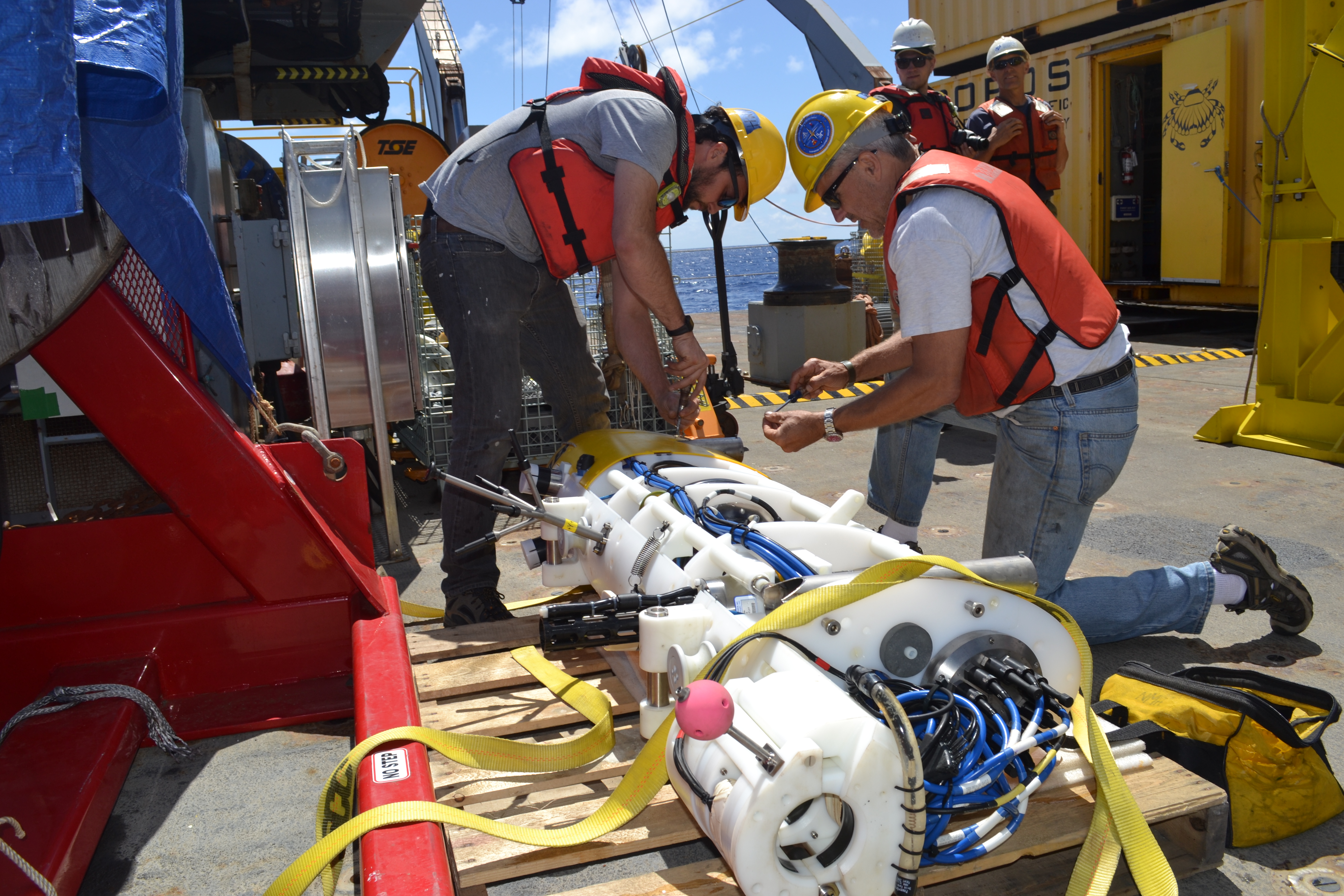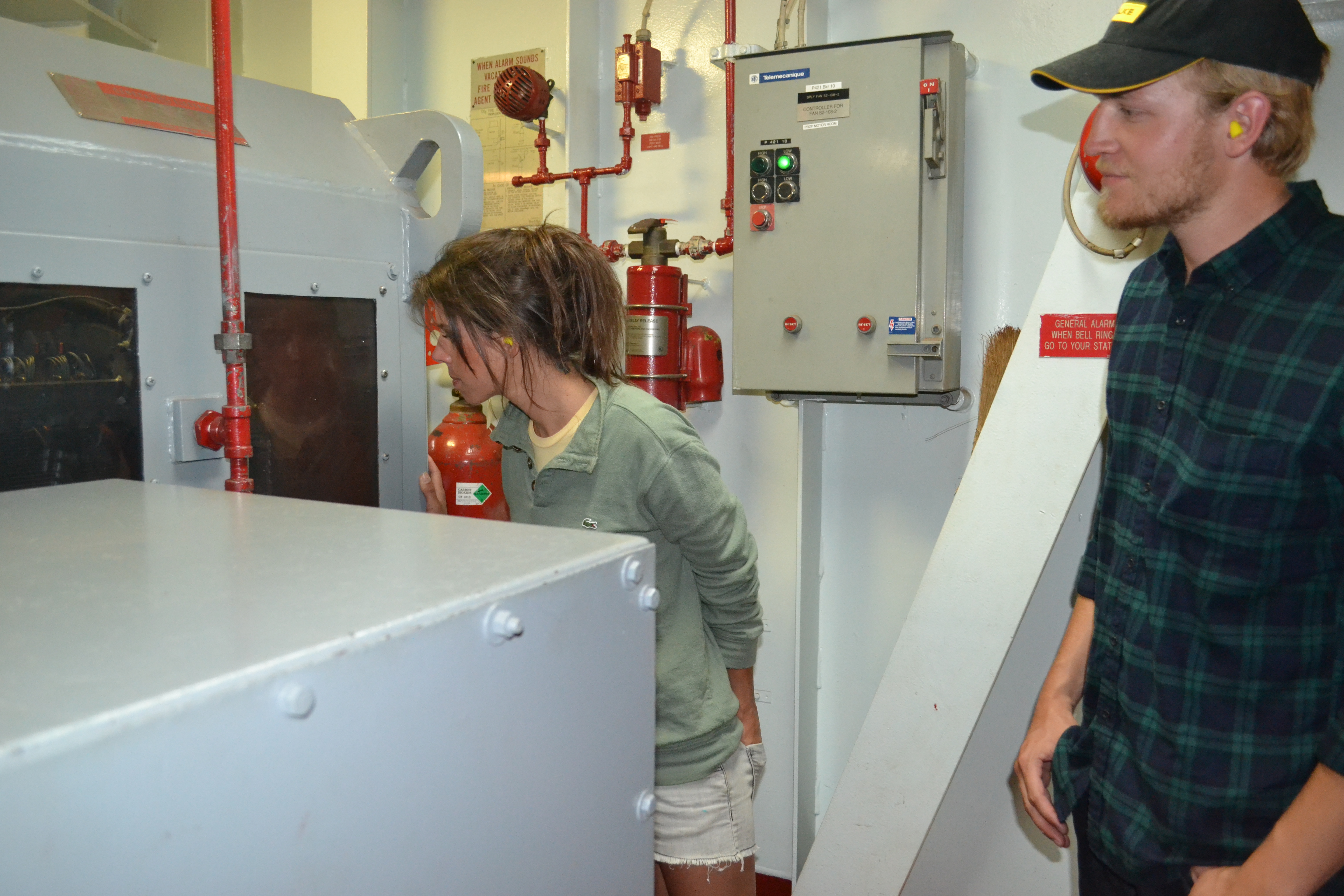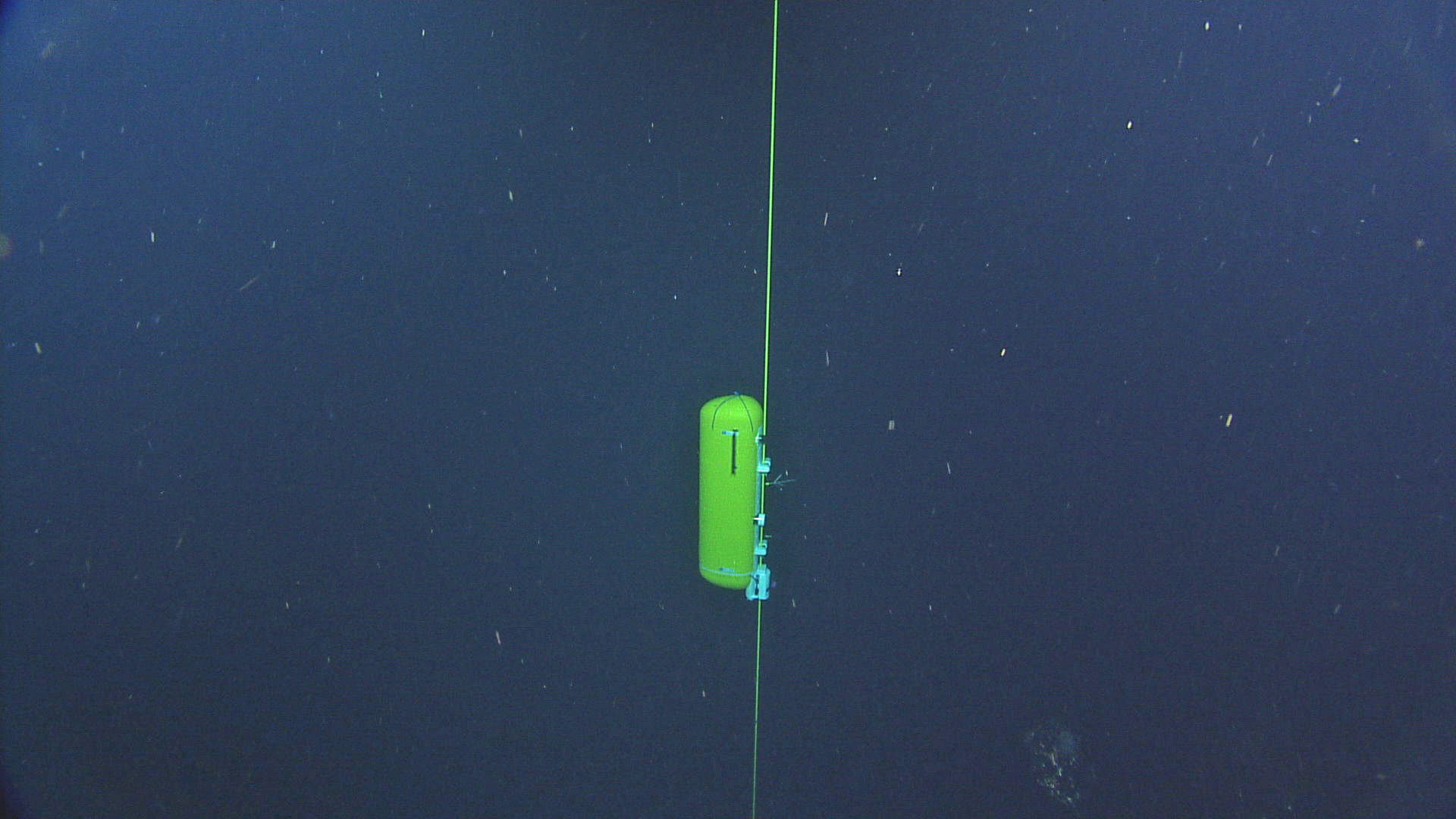Image Archive





























Erin watching the horizon with her camera ready. Credit: Malea Saul, UW; V15.

Students enjoying shoretime in Victoria, BC (CW from bottom left: Erin, Kearstin, Lauren, Emily, Malea). Credit: Erin Haphey, UW; V15.

Erica and Malea use a scraper to clean a recovered hydrophone frame and, maybe, sample some marine life. Credit: Mitch Elend, UW; V15.

R/V Thompson crewmember Sue is always willing to lend a hand on the deck. Credit: Mitch Elend, UW; V15.

Bob is still doing oxygens the old school way. Credit: Mitch Elend, UW; V15.

Malea has nominated Lauren for President and is already working on her campaign. Credit: Malea Saul, UW; V15.

View of the bridge near the entrance to Newport while heading out for the start of Leg 3. Credit: Mitch Elend, UW; V15.

A trawl-resistant Benthic Experiment Package is latched under ROPOS and ready for deployment at the EA Shelf (60 m) Site. Credit: Mitch Elend, UW; V15.

Trina (APL-UW) does final preparation and checkout of a SAMI-pH sensor before the Platform Interface Controller is deployed. Credit: Mitch Elend (UW);V15.

Kent Fletcher (OSU) uses a power washer to clean external surface of a trawl-resistant Benthic Experiment Package recovered from the EA Shelf (60 m) Site. Credit, Mitch Elend, UW; V15.

Katie and I enjoying each other's company. Credit: Cole Rogers, Western Washington University; V15.

Blue water in the Northeast Pacific. Credit: Joe Kalisch, Grays Harbor College; V15.

During Dive R1862, ROPOS attaches a line to the float on the deep profiler mooring at Axial Base in preparation for its recovery. Credit: NSF-OOI/UW/ISS; V15.

Tim McGinnis and Nick Michel-Hart of the UW Applied Physics Laboratory begin to disassemble and inspect the crawler recovered from the Deep Profiler Mooring at Axial Base. Credit: Mitch Elend, UW; V15.

Quae (Western Washington University) and Tracie (Grays Harbor College) peer into the rear thrusters’ electric motors during the engine tour. Credit: Jessica Noe, University of Washington; V15.

Chief Engineer Paul gives Leg 2 students of tour of the R/V Thompson's shop and engine room. Credit: Joe Kalisch, Grays Harbor College, V15.

A bright yellow pedicellasterid starfish (unknown species) clings to a small carbonate cobble ~3000 ft beneath the ocean surface. Credit. NSF-OOI/UW/ISS; V15, ROPOS Dive R1858.

The float atop the Deep Profiler Mooring at the base of Axial Seamount has become a habitat for schools of fish. Credit: NSF-OOI/UW/CSSF; ROPOS Dive R1860, V15.

A very large anemone and octopus call the anchor of the Slope Base Shallow Profiler Mooring home. Credit: NSF-OOI/UW/ISS; V15 ROPOS Dive R1848.

THe Oregon Endurance Offshore instrumented profiler travels down the wire on the Deep Profiling Mooring during its initial testing following installation. Credit: NSF-OOI/UW/ISS.V15, Dive R1859.

Skadis Cauldron, which was venting huge masses of microbial material and fluid following the 2011 eruption, still emits minor flow of cloudy fluid three years after this event. Credit: NSF-OOI/UW/ISS; V15 Dive R1839.

A yellow pedicellasterid starfish (unknown species) clings to a small sponge-encrusted carbonate cobble on the Oregon margin during ROPOS Dive R1958. Credit: NSF-OOI/UW/ISS; V15

Alex helps with the CTD onboard the R/V Thompson during Leg 2 of the VISIONS'15 cruise. Credit: Krista Nunnally, University of Washington, V15.

Tracie, enjoying the deck work aboard the R/V Thompson during Leg 2 of the VISIONS'15 cruise. Credit: Quae Atwood, Western Washington University; V15.

THe UW Applied Physics Lab team brings in the Deep Profiler off of the mooring cable and onto the R/V Thompson during Leg 2 of the Cabled Array VISIONS'15 cruise. Credit: University of Washington; V15.

Eric Boget from the Applied Physics Lab and Brian Clampitt from the R/V Thompson work to bring teh anchor for the Deep Profiler Mooring onboard during Leg 2 of the VISIONS'15 cruise. Credit: University of Washington, V15.

The UW Applied Physics Lab team and the R/V Thompson crew are about to pull in the mooring cable on the Deep Profiler Mooring at the Oregon Offshore site. Credit: University of Washington, V15.

Old Neptunea snail egg casings are capped by small anemones at the bubble plume site. Credit: NSF-OOI/UW/ISS; V15.
- Anemone
- Animal
- Arthropod
- ASHES
- Axial
- Axial Base
- Axial Biology
- Axial Caldera
- Bacteria
- Basalt Lava
- BEP
- Biofouling
- biolgoy
- Biology
- Camds
- Camera
- Camhd
- Central Caldera
- Ciliates
- Cnidaria
- Coastal Biology
- Crab
- Deep Profiler Mooring
- Dive Highlights
- Eastern Caldera
- Echinoderms
- Endurance Array
- Engineering Team
- ENLIGHTEN 10
- Exploratorium
- Fish
- Geology
- HD Camera
- HPIES
- Hydrate Ridge
- Hydrates
- Hydrophone
- Hydrothermal Vents
- Illustration
- Inshore 80 Meters
- Instrument
- International District
- J-BOX
- Jason
- Jellyfish
- Junction Box
- K12
- Lava
- Mollusk
- Moorings
- Nodes
- Nudibranch
- Octopus
- OOI
- Oregon Offshore
- Oregon Offshore 600 m
- Oregon Shelf
- Oregon Slope Base
- People
- PN1B
- PN1D
- Polychaetes
- PPSDN
- Primary Node
- RASFL
- ROCLS
- ROPOS
- ROPOS Dives
- ROV Team
- RV Revelle
- RV Sikuliaq
- RV Thompson
- Salp
- Sample
- SC13
- Science Team
- Sea Cucumber
- Sea Star
- Sea Urchin
- Seafloor
- Seismometer
- Sensors
- Shallow Profiler Mooring
- Shark
- Shipboard
- Shore Station
- Slope Base
- Smoker
- Soft Coral
- Southern Hydrate Ridge
- Sponge
- Squid
- Students
- Students & Guest Participants
- Tmpsf
- Tubeworms
- VISIONS 11 Leg 1
- VISIONS 11 Leg 2
- VISIONS 11 Viewers
- VISIONS 13
- VISIONS 14
- VISIONS 15
- VISIONS 16
- VISIONS 17
- VISIONS 18
- VISIONS 20
- VISIONS 22
- VISIONS 23
- Visualization
